Astilba: description and types, planting and care
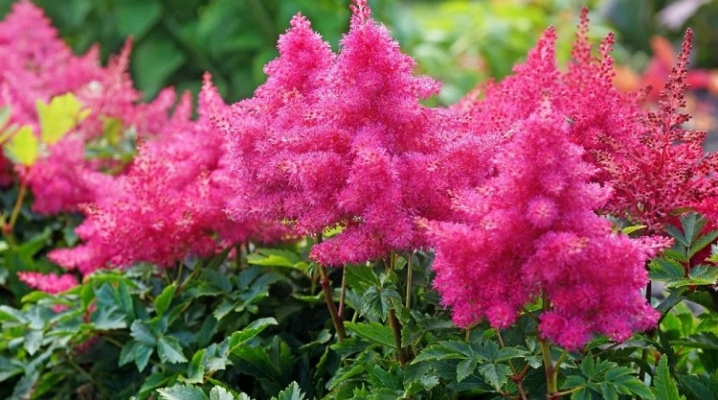
Flowering plants are constant companions in human life. They can be seen on the windows of living quarters, in festive bouquets and, of course, on flower beds. Each owner of a personal plot applies the maximum amount of effort to decorate and decorate his territory.
Landscape designers use a huge number of colors that differ in shape, color scheme, size and way of care. In order for the created flower bed not to require special care, experts recommend paying attention to unpretentious perennials, a prominent representative of which is astilba.
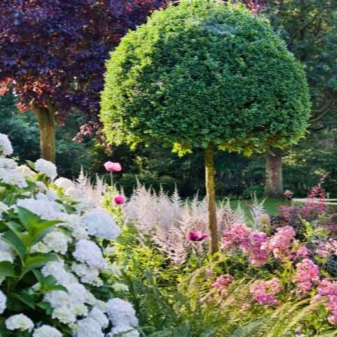
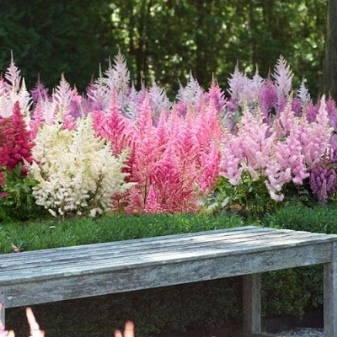
Peculiarities
Astilba is a perennial herb that belongs to the Saxifrage family. Astilba is native to Japan, the USA, Asia and the Far East. The peculiarity in the description of this flower is its compact size and abundant flowering. In the summer, the plant pleases its owners with curly greens and decorative inflorescences, which completely die off after the onset of cold weather. The height of the shrub depends on its species and ranges from 10 cm to 2 meters, and its annual growth does not exceed 5 cm. Astilba leaves have a feathery complex dissected structure, jagged edges, wrinkled and velvety surfaces, and a wide range of colors. The most common shades are:
- green;
- brown;
- White;
- pink;
- lilac.
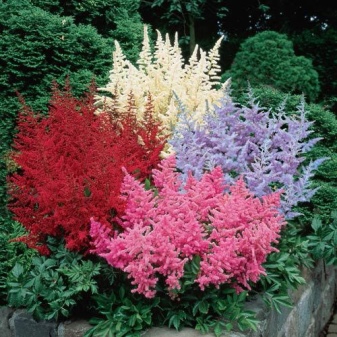
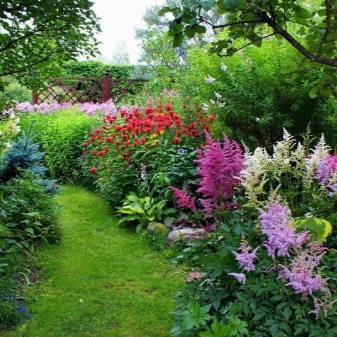
Due to the unusual and very beautiful structure of the leaf plates, which fit tightly to each other, the bushes have high decorative characteristics even in the absence of inflorescences. The beginning of flowering depends on the variety of the bush, which are early, medium and late. During this period, astilbe looks the most attractive. Miniature flowers of this variety are located on the top of a long stem and form an inflorescence that resembles long feathers. Depending on the variety, inflorescences can have several types of structure:
- pyramidal - the location of the lateral branches of the inflorescence at a right angle relative to the axis of the trunk;
- rhombic - the location of the side branches at a certain angle relative to the central axis;
- paniculate - the location of the branched branches of the inflorescence at an acute angle relative to the axis of the main stem;
- drooping - the direction of the inflorescences down.
The roots of a perennial flower are highly resistant to low temperatures. In temperate climates, where the temperature in winter does not exceed -35 degrees, the owners may not shelter their pets.
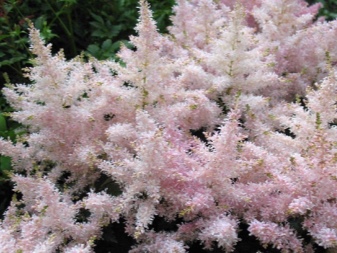

Types and varieties, their shades
A few decades ago, gardeners and landscape designers used a limited number of astilbe species in their projects, but the popularity and increased demand for this flower forced breeders to work on breeding new and even more beautiful species and varieties. This process has led to the emergence of more than 25 types of astilba and a huge number of varieties. Here are the most popular ones.
- Arends - a little-demanded perennial that feels comfortable in the shade of gardens and near small bodies of water. Experts recommend planting this species in small groups.White, purple, cream and pink are the most popular inflorescence shades. The maximum height of the bush is 60 cm. The flowering period is June-July.
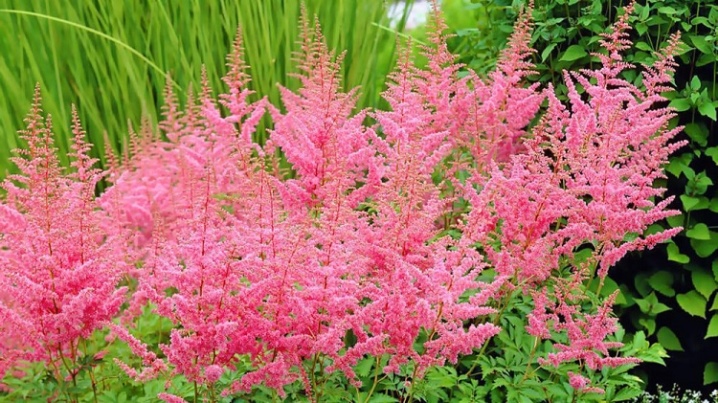
- Japanese - a little used species, which, depending on the variety, can bloom in white, pink, burgundy and red. The plumose plate has a dark green shiny surface. You can admire the flowers in July and August.
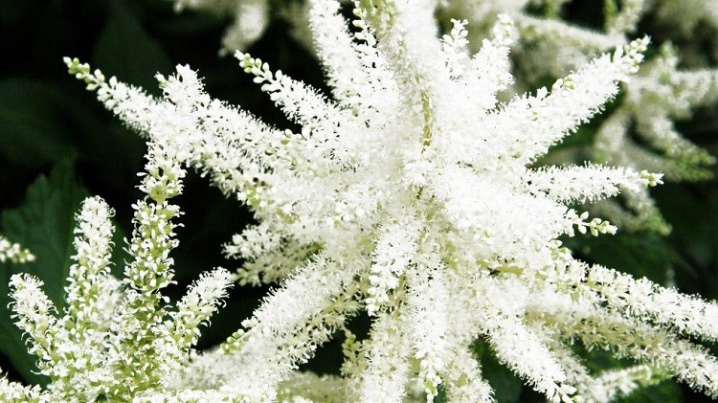
- Chinese Is a popular perennial with pink flowers. The flowering period is June-July. The leaf plates are colored deep green. The standard height of the bush is 50 cm, but there may be deviations from the norm.
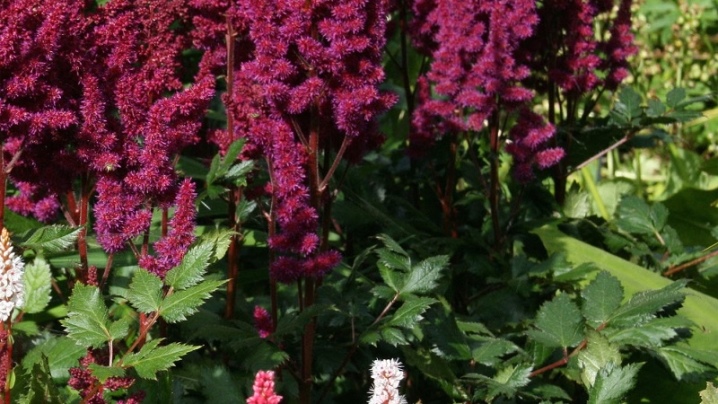
- Simple-leaved - a valuable decorative species that has short shoots. The height and diameter of one bush is 45 cm. The rich green leaf plates have a glossy surface.

- Smooth (nude) - undersized perennial, the height of which does not exceed 30 cm during flowering. The color of the leaves is brown, the shade of branched inflorescences is pale pink. The flowering period is July, August. The plant is best planted on the banks of small bodies of water.
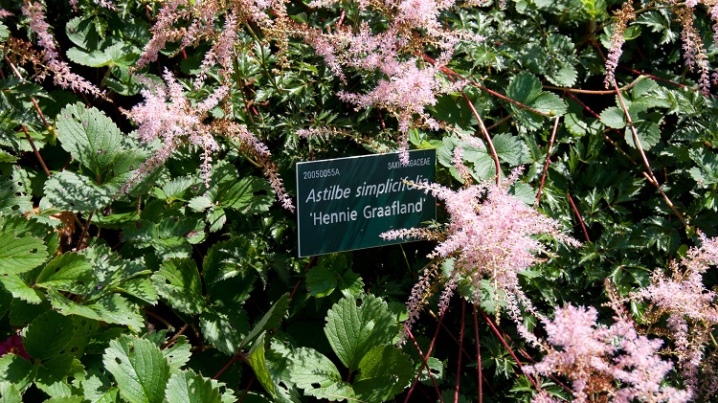
Despite the species diversity, florists recommend that novice gardeners pay attention to the Chinese astilbe, which has more lush flowering, is less demanding on soil moisture, and the flowering period lasts until the coldest temperatures. Taking into account the varietal diversity of astilbe, which consists of more than 2000 hybrids, breeders have divided the varieties into the following groups and recommend paying attention to their most prominent representatives:
- Arends - Bumalda, Deutschland, Erica, Anita Pfeiffer, Radius, Hyacinth, Lollipop;
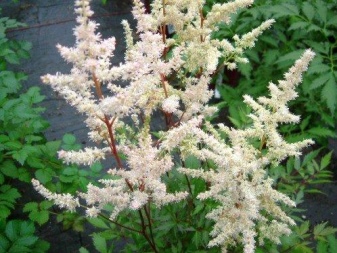
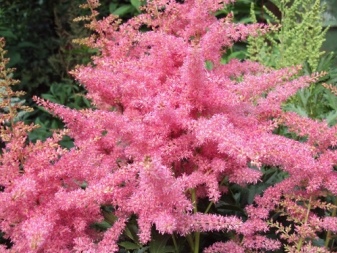
- Astilboydes - Blond, Keningin Wilhelmina, Lord Salsbury, Floribunda;
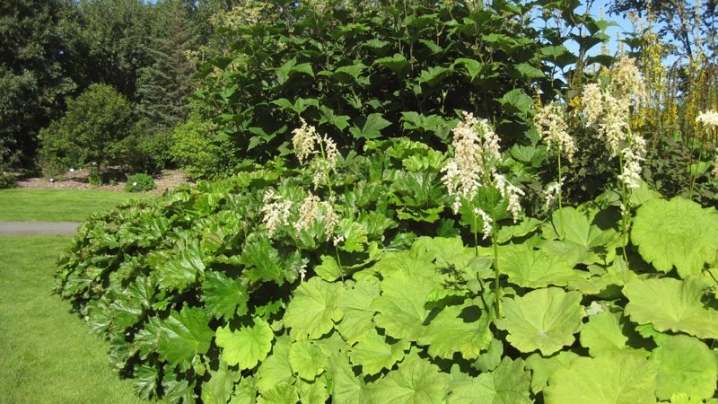
- low Chinese - Finale, Intermezzo, Cappuccino, Serenade, Purpurkerze, Superba, Veronica Close, Purpurkerz, Spatsommer, Ash Rain, Milk and Hani ;
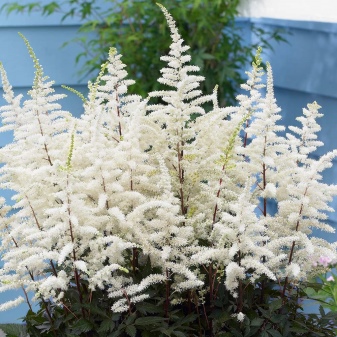
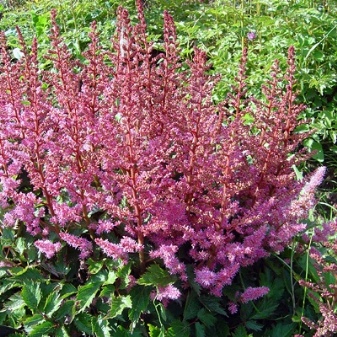
- fringed - "Daumling Gnome", "Kobold", "Lilliput", "Perkeo", "Elata";
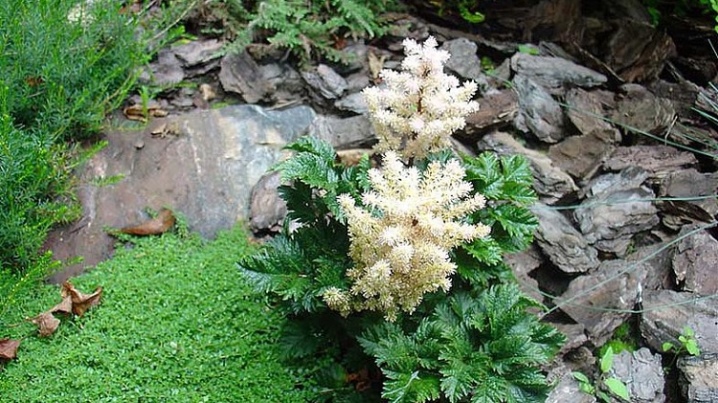
- hybrid - "America", "Avalanche", "Betsy Kuperus", "Delft Lace", "Gloria Purpurea", "Koning Albert", "Rubella", "Hildegard", "Quele";
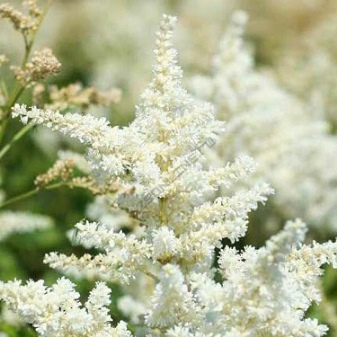

- Japanese - "Europe", "Washington", "Bow et Mi", "Cologne", "Mainz", "Vesuvius", "Ellie";


- Lemoine - "Herb de Neuzh", "Mont Blanc", "Spit Neujo";
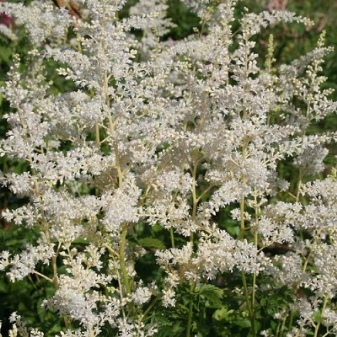
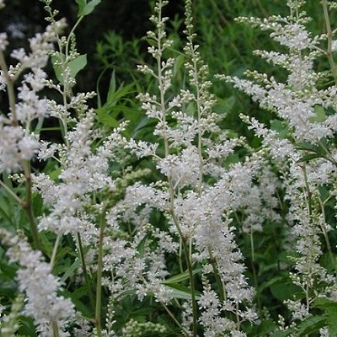
- pink - "Peach Blossom", "Queen Alexandra";
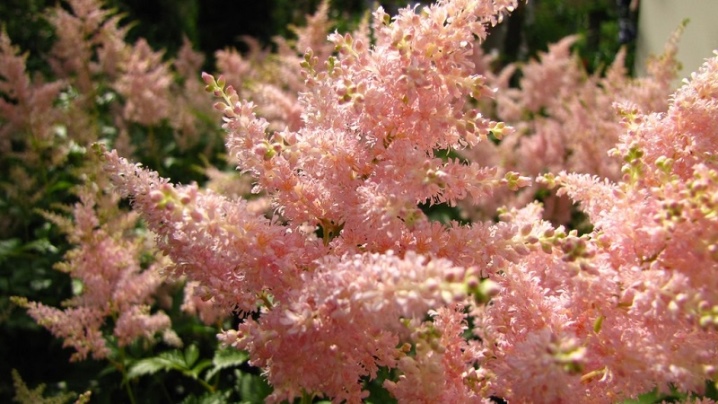
- simple-leaved - "Altroosea", "Delikata", "Dunkellahs", "Salmonea", "Bronze Elegance";
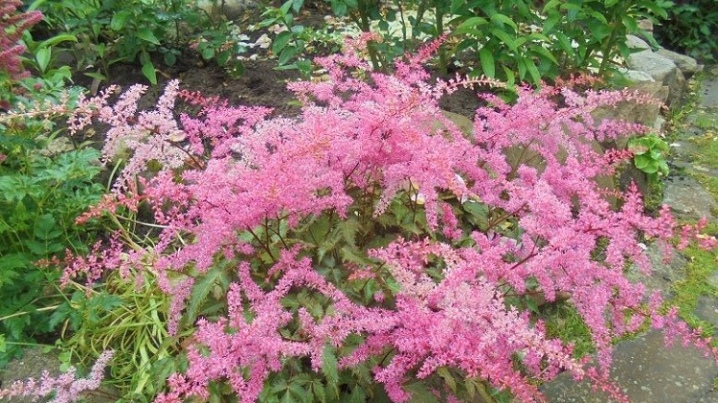
- Take - "Superba";
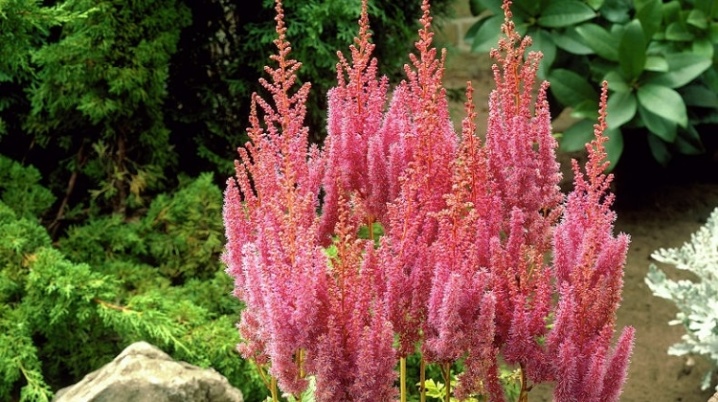
- Thunberg - "Professor Van der Wilen", "Strausenfeder", "Ostrich Feather";
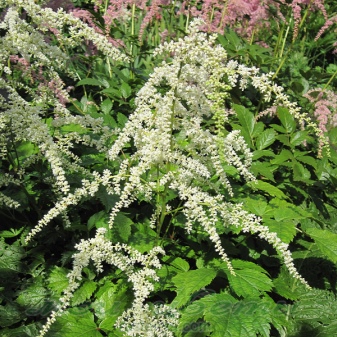
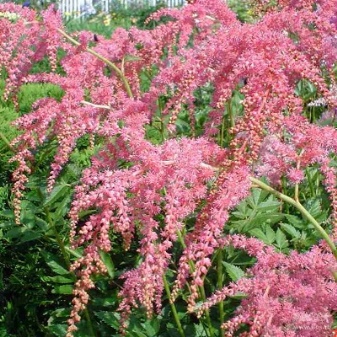
- naked - Darwin Snow Sprite, Glenroy Elf, Henny Grefland, Inshriach Pink, Jacqueline, Nana, Peter Barrow, Saxatile, Sprite.
The above list of varieties and species is far from complete. Each owner of a personal plot can independently choose the type they like, depending on the area of the territory, the type and composition of the soil, as well as the illumination of the plot.
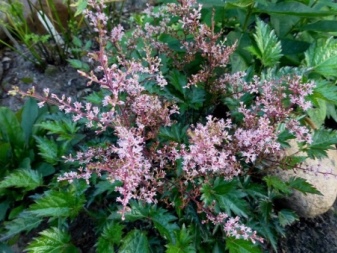
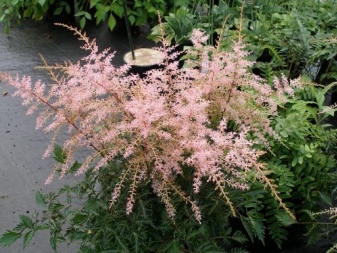
We take into account the climatic zone
Astilbe care and preparation for winter must be organized depending on the climatic conditions of the region where it grows. In latitudes with a temperate climate, where a large amount of snow falls in winter, and the temperature does not drop below -20 degrees, the shrub must be cut and mulched at the end of autumn. Some summer residents additionally cover their plantings with straw or spruce branches. Plants planted in Siberia and the Urals need more thorough preparation for winter.
Due to the fact that during the period of maximum frost, the soil can freeze up to 100 cm, experts recommend not only mulching the soil, but also constructing frames over the plants to fix the covering material.

Choosing a place
Astilba is an ornamental plant that loves shaded areas. The sun's rays should only fall on the selected area for a short period of time.Excess light, heat and drought will not only reduce the decorative properties of the flower, but will also cause the death of the root system. Particular attention should be paid to the depth of the groundwater. If the site has a high level of moisture and waterlogging, then the root system will begin to rot, which will certainly lead to the death of the plant. The drainage material located at the bottom of the planting pit will help to improve the situation a little. The flower loves fertile soil with a high humus content. The choice of a place for planting a flower is directly influenced by the following factors:
- the ability to grow a flower in one place for more than 15 years;
- rapid growth of plantations;
- short flowering period in well-lit areas.
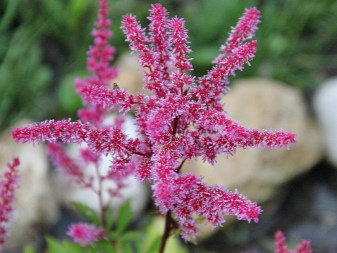
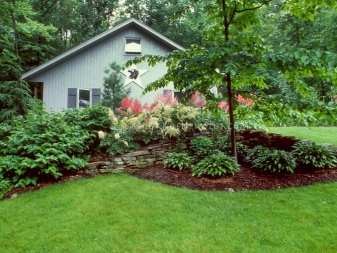
How to plant?
In order for the selected astilba variety to quickly begin and delight its owners with a healthy and beautiful appearance, experts recommend that you be especially careful when choosing seedlings and planting them. The plant feels good both in the garden and in pots on the balcony. Signs of quality planting material:
- having a healthy root system;
- the absence of dead areas, rot and signs of disease;
- moderate humidity of the processes.

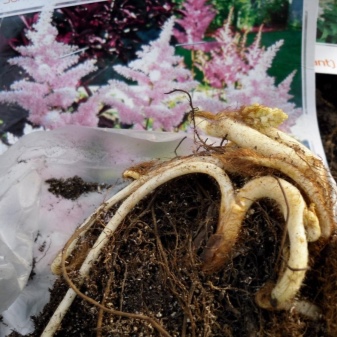
Experienced gardeners recommend abandoning the purchase of an elongated, curved and sluggish planting material, which, if it takes root, will hurt for a long time, and also lose its decorative characteristics. The volume of the planting hole should correspond to the size of the root system. All root outgrowths should be loosely located in the excavated cavity. The main thing when planting is not to deepen the root collar. To maximize the provision of the plant with all nutrients, experts recommend pouring hydrogel, bone meal, wood ash and a small amount of special mineral fertilizers into the pit.
If the soil on the site contains a large amount of clay, then river sand must be added to it. The acidity level should not exceed 6 units. After planting the seedlings, the planting holes must be watered abundantly with clean and settled water, and the root zone must be covered with chopped bark and peat. This event will help maintain soil moisture and significantly reduce the number of irrigations. The distance between seedlings depends on the type of flower, its maximum height and the diameter of the bush.
The optimum planting density for most species is 10 bushes per square meter.

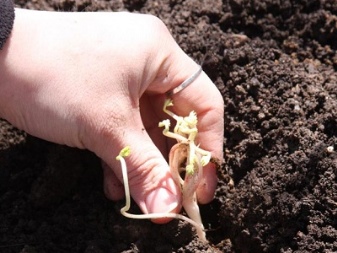
How to take care of it properly?
Astilba belongs to unpretentious plants that do not require complex agricultural technology, and growing even in the country will not cause difficulties. After winter, the shrub rises slightly above the soil level, therefore, after the snow melts, it is necessary to fill the entire root zone with nutritious soil to the level of the growing point. To prevent the root system from drying out, it is better to mulch this area.
Due to the peculiarities of the root system, in which there is a gradual dying off of the lower processes and the growth of the upper ones, the flower needs regular and timely watering. During the period of inflorescence formation and during flowering, it is necessary to pay special attention to soil moistening, which should be carried out 2 times a day. It is strictly forbidden to water the plants with cold water.
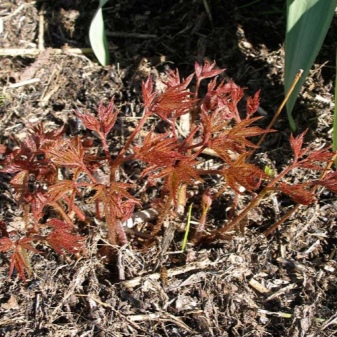

In order for the flower to have the strength for abundant and bright flowering, experts advise novice gardeners not to forget about regular feeding. The flower reacts positively to both organic and mineral fertilizers, but it is still better to give preference to organic matter, which will not only provide the bush with all the necessary nutrients, but also improve the structure of the soil and increase the amount of humus. Experts recommend fertilizing flowers with rotted manure and compost-peat substrate.
If the owners prefer mineral fertilizing, then at the beginning of spring the soil must be fed with nitrogen, and phosphorus must be added during the flowering period. Potassium is needed for a flower only at the end of autumn. Timely application of these minerals will not only significantly increase the flowering time and the number of inflorescences, but will also help the flower to form the required amount of high-quality seed material. If you organize the fertilization system correctly, then you can not transplant the plant for 15 years.
To improve oxygen access to the roots, it is necessary to regularly loosen the root zone and remove weeds in a timely manner. The flower needs only sanitary pruning, which consists in the spring removal of all dead and deformed parts, as well as in the removal of dry and faded inflorescences that prevent the formation of new inflorescences. You can remove all unnecessary parts with a special sharp garden tool.
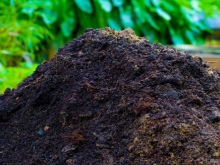
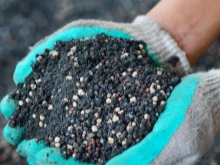
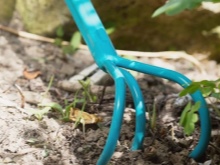
Despite the flower's resistance to low temperatures, it is better to cover the plantings with non-woven material or spruce branches at the beginning of winter, which will protect the bushes from the harmful effects of spring frosts. Flowers require special attention to themselves in early spring, after the complete disappearance of snowdrifts. For the rapid appearance of young shoots, it is necessary to thoroughly clean the surface of the earth from old branches, last year's dead leaves, as well as from various garden debris. It is during this period that old plants should be transplanted, the flowering intensity of which decreases 3 years after planting.
To speed up the flowering period, experts recommend outsmarting nature a little and at the beginning of autumn divide the flower's root system into small parts.to be planted in regular flower pots. Throughout the winter, containers with flowers must be stored at a temperature of about 0 degrees, and already at the beginning of February, all prepared containers must be placed in a greenhouse, the air temperature in which is at +10 degrees.
After the appearance of the first leaves, the temperature regime can be increased to +18 degrees, and after 2 weeks the plant owners will be able to admire the bright and beautiful flowers.
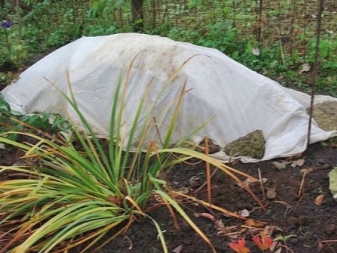
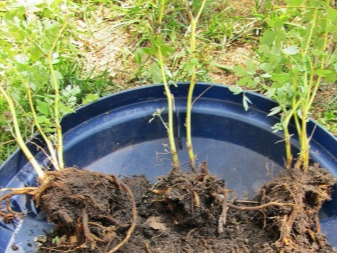
Reproduction methods
In order to get young seedlings, several breeding methods can be used:
- dividing the bush;
- root layers;
- division of the kidneys;
- using seeds.
At home, astilba can be propagated by cuttings and root layers. To obtain planting material, the mother bush must be carefully removed from the ground and divided into the required number of seedlings with a sharp garden tool. Each part should have a piece of rhizome, some root shoots and an aerial green part. It is best to divide the bushes in early autumn or early spring.
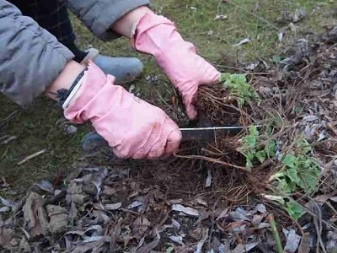

All the obtained planting material must be placed in planting containers with peat soil or buried in light sandy soil at a depth of no more than 10 cm. The entire surface of well-moistened containers must be covered with moss or spruce needles. If the planting material was collected in the fall, then it will be possible to plant it in open ground as early as next spring, and spring seedlings should be transplanted in the fall.
The simplest method of reproduction is by dividing the kidneys. To obtain planting material, it is necessary to separate the renewal buds from the mother bush in early spring with a sharp tool. The resulting cuttings must be planted in a greenhouse, in which the soil should be mixed with sand and gravel. Before planting, it is imperative to treat all sections with wood ash.
The seed propagation method is more complex and time consuming, therefore it is very rarely used by ordinary gardeners. But breeders and workers of large nurseries using this propagation method often get seedlings.

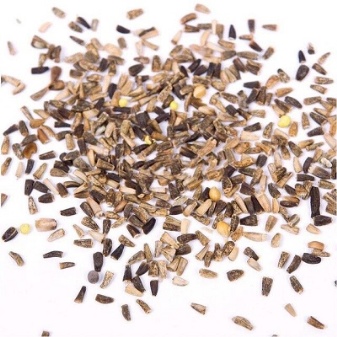
Plants grown from seeds at home, do not always have varietal genetic characteristics and often have the following negative characteristics:
- color change;
- rare arrangement of flowers;
- low level of decorativeness;
- short flowering period.
Those gardeners who, despite the complexity of the seed reproduction method, nevertheless decide to sow seeds, it is imperative to take into account the recommendations of specialists. In early spring, it is necessary to fill all the prepared planting containers with nutritious peat soil and put them in a warm and bright room for warming up. The seeds must be evenly distributed over the entire surface of the container and covered with a thin layer of vermiculite, which will provide the required level of moisture. In comfortable conditions, the first shoots will begin to appear in 2-3 weeks. After the formation of several true leaves, the seedlings can be transplanted into open ground.


Diseases and pests
Due to the genetic resistance of astilba to the destructive action of dangerous viruses and microorganisms, the plant is practically not affected by diseases. Despite this feature, sometimes the root system of the bush can be affected by the rootworm nematode. It is almost impossible to destroy this parasite, therefore, to prevent the spread of the pest, it is necessary to completely dig up the bush and burn it away from the site, as well as remove all bad root soil.
A slobbering penny can sometimes settle between the leaves of weakened bushes. Bushes affected by this pest look depressed and lifeless, and the intensity of the formation of green mass decreases several times. The strawberry nematode can cause harm to the flower, the first signs of which are the appearance of brown and yellow spots. Parasites can be seen in the sinuses, buds and flowers of the astilba. Don't forget about snails and slugs.
To prevent the appearance of parasites and various diseases, experienced summer residents recommend regularly making a full inspection of the plantings and treating the plants in a timely manner with special prophylactic and medicinal preparations.
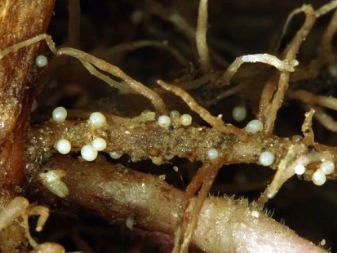
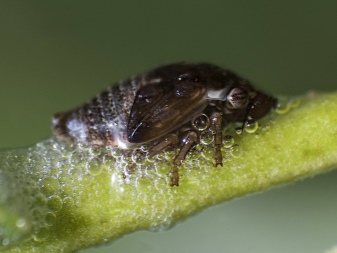
Possible problems
The unpretentiousness of the plant often misleads novice gardeners, who, in the process of caring for a flower, do not pay enough attention to it. This oversight can lead to the fact that the leaves of the plant curl, it grows quickly, few inflorescences are formed, which fade very early. Experts highlight the most common mistakes:
- ignoring autumn feeding;
- failure to carry out sanitary pruning;
- ignoring the mulching procedure and winter shelter.
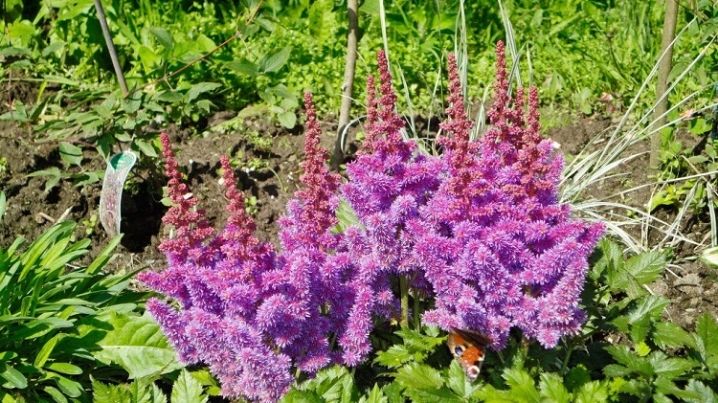
Examples in landscape design
- Due to its decorativeness, astilba is widely used in the design of city parks, alleys, squares and recreation areas, as well as in flower beds of almost all owners of personal plots. Due to the abundant flowering, this flower looks beautiful against the background of green lawns and coniferous plantations.
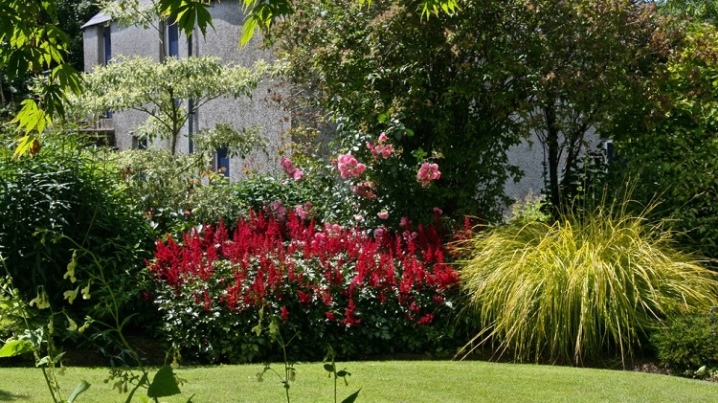
- To create beautiful green compositions, astilbe can be planted together with hosts, geyher, ferns, Japanese anemones, geraniums, large-leaved brunerra, Volzhanka vulgaris, and also apical pachisandra.
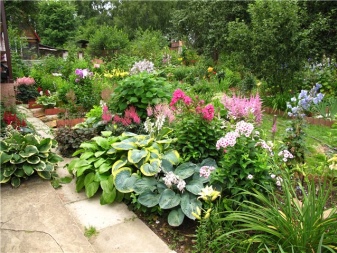
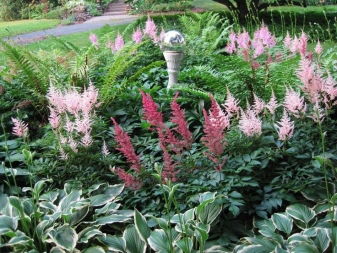
- Large plantings of astilba look especially impressive on the banks of reservoirs, in the transparent water of which rich colors of bright inflorescences are reflected. For landscaping terraces, balconies and loggias, designers often use flowerpots with low astilbe planted in them.

- Florists recommend not only admiring the flowers growing in the flower bed, but also using partially blossoming inflorescences for making bouquets and floristic compositions.


- Many summer residents plant this flower in the root zone of various trees. These compositions will be able to decorate and refine any garden.The flower will feel more comfortable around trees that have shallow root systems.

- Astilba feels comfortable in the same flower bed with roses, tulips, irises and periwinkles.

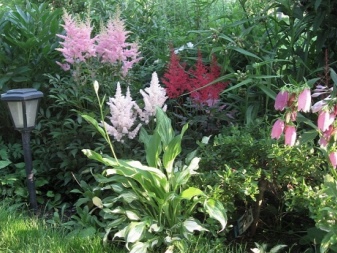
For information on how to plant and care for astilba, see the next video.







































































































The comment was sent successfully.